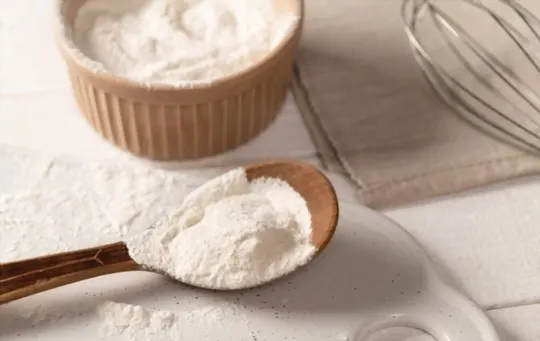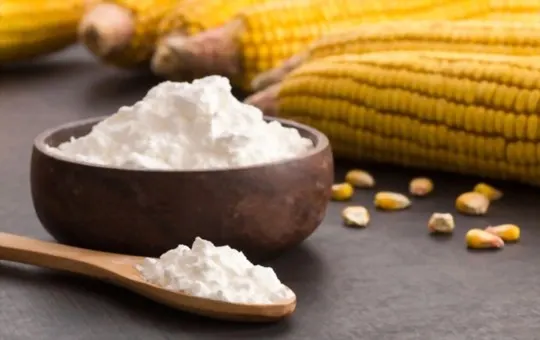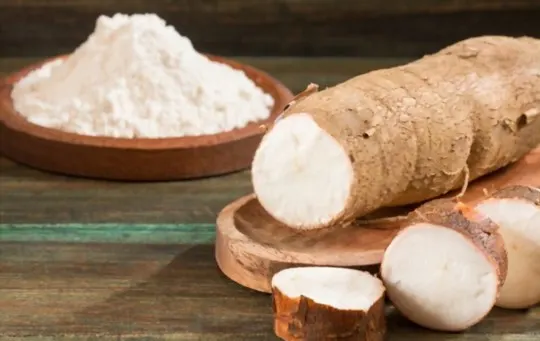Are you looking for alternatives to flour for thickening your sauces, soups and baked goods?
Whether you’re avoiding gluten or just looking for something new, there are many different options to choose from.
Get ready to discover five of the most popular food thickening agents.
You’ll never look at flour the same way again.
What are Food Thickening Agents?

Understanding food thickening agents can be a challenge, however they are useful ingredients that can help transform the texture and consistency of many dishes.
Food thickening agents work by introducing molecules of protein, starch or fat that bind together to form a more solid product.
Examples include cornstarch, cornstarch-based products like tapioca starch, and roux-based sauces.
In addition to creating a mouthfeel that is pleasant, these ingredients can also lend flavor to many dishes when done correctly.
To use a food thickening agent effectively, it is important to understand the ratio of liquid to dry ingredient needed in order to achieve the desired texture.
For instance, if your recipe calls for 2 tablespoons of cornstarch for 1 cup of liquid it will produce a much thicker result than if you used just 1 tablespoon for the same amount of liquid.
Ultimately through experimentation with different amounts and ratios of thickener to liquid it is possible to master this essential culinary skill.
5 Thickening Agents for Cooking and Baking That Aren’t Flour
When it comes to improving the texture of your cooking and baking, gelling agents, or “thickeners”, can be used to give everything from sauces to custards a much creamier consistency.
While all-purpose flour is the go-to thickening agent for many recipes, there are a variety of alternatives that are even easier and healthier to use.
Here are five of the most popular non-flour thickeners that are worth investing in:
1 – Cornstarch

Cornstarch is one of the most common and reliable thickeners used in cooking and baking.
It is a powdery starch derived from the endosperm of corn, which makes it an ideal thickening choice for sauces, gravies, pie fillings, custards, puddings—and more.
Cornstarch is twice as powerful as flour and takes less time to achieve a smooth, thick consistency in sauces.
It should always be dissolved prior to adding it to a mixture to activate its thickening properties.
To dissolve cornstarch simply whisk it into a small amount of cold water until smooth before stirring it into your recipe.
Since Cornstarch will clump if added directly to hot liquids, it’s important that you always mix it with cold water first prior to incorporating into heated items.
2 – Tapioca Starch

Tapioca starch, sometimes called tapioca flour, is extracted from the South American cassava root and is a great thickening agent especially when you are gluten-free.
It leaves no flavor behind and won’t alter the texture or color of food it has been added to.
Tapioca starch thickens quickly at a low temperature and does not start to become stringy until it reaches 212°F (100°C).
Be sure to add tapioca starch gradually, stirring constantly until the desired thickness is achieved.
3 – Arrowroot Starch

Arrowroot starch is a food thickening agent is commonly used in paleo, gluten-free and vegan baking because it is easily digested and has no flavor.
It comes from the root of the arrowroot plant, which is native to Latin America.
Arrowroot thickens quickly and produces an almost shiny, translucent finish.
It has a slight sweetness but can easily be combined with other ingredients to add more flavor.
When heated in liquid, it becomes clear and makes for a visually attractive result as sauces remain glossy.
When using arrowroot to thicken gravy or sauce, mix it with cold water first before adding it to the liquid you are thickening.
Mixing it with cold water will help prevent lumps from forming in your gravy or sauce.
To substitute arrowroot for flour, use twice as much arrowroot — so if your recipe calls for 1 tablespoon of flour, use 2 tablespoons of arrowroot instead.
4 – Xanthan Gum

Xanthan gum is a powerful thickening agent that is produced by a fermenation process and used in many commercial products as an emulsifier, stabilizer and binder.
It acts almost instantly when added to liquids, so it differs from other thickeners like flour or cornstarch which require further cooking for them to thicken.
To use xanthan gum for thickening sauces, add a very small amount (about 1/4 teaspoon) per cup of liquid and mix thoroughly with a whisk.
Xanthan gum can double in volume, so be judicious when adding it to your recipe.
To avoid clumps, combine the powder with a small amount of the sauce or other liquid before adding it to the pot.
Too much xanthan gum will lead to slimy textures in food, while not enough will result in a thin sauce with little body or thickness.
In baking recipes like pies and custards, xanthan gum can be substituted up to 1/4 teaspoon per cup of flour called for in the recipe as an alternative thickener.
As long as you don’t overdo it (a little goes a long way), your recipes will come out just fine.
5 – Agar Powder

Agar powder (or agar-agar) is derived from a variety of seaweed.
When added to hot liquid and left to cool, it forms a gel-like consistency that can be used as an egg white substitute.
Agar powder is useful in puddings, jellies and mousses, as well as vegan cheese recipes.
Substitute agar powder for other thickeners when you’d like a vegan alternative.
It’s flavorless and only 1 teaspoon of agar is usually equivalent to 1 tablespoon of cornstarch.
Note that agar doesn’t dissolve in cold liquids, so you’ll need to use it in heated recipes or products you intend to heat once thawed.
Conclusion
In conclusion, there are many food-thickening agents out there that can be used as alternatives to flour.
Each of them has its own unique properties, making it useful for a variety of dishes.
Cornstarch and arrowroot are both good thickening agents for sauces, gravies and soups, while agar-agar and pectin are ideal for making gummies and jams.
And if you prefer the more natural route, xanthan gum might be your best bet as it can be made from corn sugar or fermented starch and is perfect for vegan baking.
Whichever agent you choose to use in the kitchen, it’s important to take note of usage directions to ensure a successful dish every time.

5 Thickening Agents for Cooking and Baking That Aren’t Flour
Ingredients
- 1 – Cornstarch
- 2 – Tapioca Starch
- 3 – Arrowroot Starch
- 4 – Xanthan Gum
- 5 – Agar Powder
Instructions
- Choose your preferred substitute from the list of options.
- Organize all of your ingredients.
- Use the proper substitute to cook your recipes.

Carrie is a food writer and editor with more than 15 years of experience. She has worked for some of the biggest names in the food industry, including Bon Appétit, Food & Wine, and Martha Stewart Living.
As the Editor in Chief of IntroChicago.com, Carrie oversees all of the content on the site. She also manages the team of contributing writers and editors, who help to create delicious recipes, helpful tips, and informative articles that you’ll find on the site.
A native of the Chicago area, Carrie is passionate about all things food. She loves trying new restaurants and experimenting with new recipes in her kitchen. She’s also a graduate of the Culinary Institute of America, so she knows a thing or two about food!
